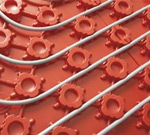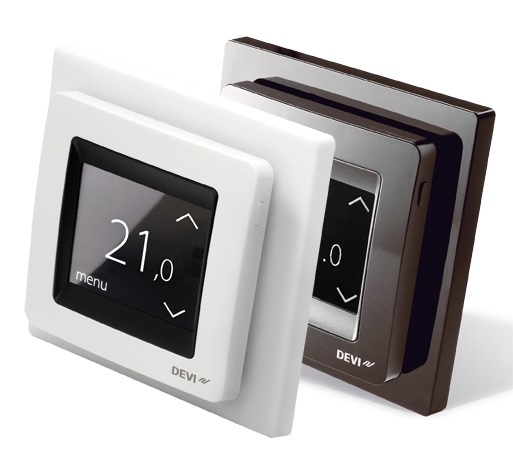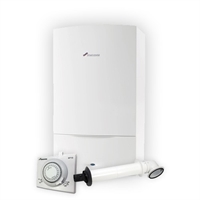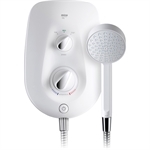How is underfloor heating installed?
The way in which your underfloor is installed is dictated by the type of underfloor heating system you have. There are 2 main types you can choose from;
 Electric underfloor
Electric underfloor
This relies on a series of wires that sit under your flooring. The wires themselves commonly sit on top of insulation to enable you to better utilise the heat that is generated.
The wires themselves can either be individual wired across the floor and tailored to the shape of the space you are laying them on or you can opt to use heating mats, which make it easier to lay in pre-wired batches (check out our Devi electric underfloor heating range for an example of this).
The benefit of electric underfloor is that it is typically easier to install and less bulky, however due to the cost of electricity compared to gas, the can be a little more expensive to run (this may make them a more popular proposition if you are looking to fit in a space with a smaller surface area).
- Wet-system underfloor
This water fed system works similar to the way in which most traditional UK central heating systems work, in so much that a series of pipes are laid out under the floor and these are fed by hot water from your boiler (bit like your radiators).
The water actually flows from the boiler and into an underfloor heating manifold (see next question to find out more about this) and from here the flow of water to your underfloor heating pipework is controlled.Wet system installations are considered as efficient additions to any central heating system and due to the thicker pipework the amount of heat energy generated is generally considered to be more than with the electric underfloor counter-part. Wet system installations are a little tougher to install so require specialist attention from an experienced installer, so fitting costs may be a little higher than installing an electric underfloor system. Due to the thicker depth of the pipework required, this type of underfloor is also very popular for new builds which can have their floor raised slightly as part of the build. That being said, it is of course possible to introduce wet system underfloor heating to any property. We always recommend you consult an expert before purchasing.
Wet system installations are a little tougher to install so require specialist attention from an experienced installer, so fitting costs may be a little higher than installing an electric underfloor system. Due to the thicker depth of the pipework required, this type of underfloor is also very popular for new builds which can have their floor raised slightly as part of the build. That being said, it is of course possible to introduce wet system underfloor heating to any property. We always recommend you consult an expert before purchasing.
We sell a lot of wet system underfloor heating every day at TDL Online. Take a look at our popular Polypipe underfloor heating range including our Polypipe Overlay underfloor range and our Polypipe solid floor range. We also have a range of pre-built underfloor heating packs available – please talk to one of the team for more information.
What are underfloor heating manifolds?
 As a vital part of any underfloor heating system is it’s manifold, which manages the important job of controlling the flow of water to each pipe in the underfloor setup. The manifold therefore allows water into the system and also controls the return flow of the water back to the boiler.
As a vital part of any underfloor heating system is it’s manifold, which manages the important job of controlling the flow of water to each pipe in the underfloor setup. The manifold therefore allows water into the system and also controls the return flow of the water back to the boiler.
There are a variety of different types of manifold available and the one you require may be dictated by the type of underfloor system you go for (for example, some manifolds may come with an integrated pump if there are flowrate concerns), however you would expect to see a standard supply and return manifold in any underfloor setup.
Can you have underfloor heating with carpet?
Yes you can. There are many types of underfloor heating panel out there and most laminate floor panels can be used in conjunction with carpets. You may however find that using carpet may bring the heat output experienced down a little, purely because of the extra material the heat has to get through.
Due to fact that electric underfloor heating setups have thinner wires rather than thicker pipes, it is often recommended that you avoid having a thick carpet laid if you want to enjoy the full benefit of an electric underfloor heating installation.
Can you have underfloor heating with laminate?
Yes - underfloor heating can certainly be used in conjunction with laminate floor panelling.
Due to the light weight nature of laminate flooring, popular choices for use with laminate flooring include the Polypipe Overlay Lite underfloor range.
Can underfloor heating go wrong?
As with anything in life, things can of course go wrong. However there is certainly nothing to be overly concerned about as underfloor heating is no more at risk than any other part of your central heating system.
Important components like your underfloor heating pipes and manifold are rigorously tested prior to installation to ensure they do not leak.
If in the worst case something we to go wrong, you would just need to claim on your home insurance as you would with any other kind of central heating problem/damage.
 What are the running costs of Electric underfloor heating? Does underfloor heating use much electricity?
What are the running costs of Electric underfloor heating? Does underfloor heating use much electricity?
Electric underfloor installations are typically a little more expensive to run when compared to wet system underfloor systems. This is largely down to the simple fact that electricity is more expensive than gas.
Although wet systems are more expensive to install, they can work out a lot cheaper to run in the long term.
To get an idea of the running costs of your electric underfloor heating, find out how many kw/hr the electric one would use per square meter and times this by the cost per kW (this should be available from your heating company or on your most recent bill). You can then times this figure by the estimate about of time you envisage having your underfloor heating on for each day/month.
You can of course look to ensure you make the most of the heating you use by using a set of heating controls (we sell a range here at TDL).
























.png)


